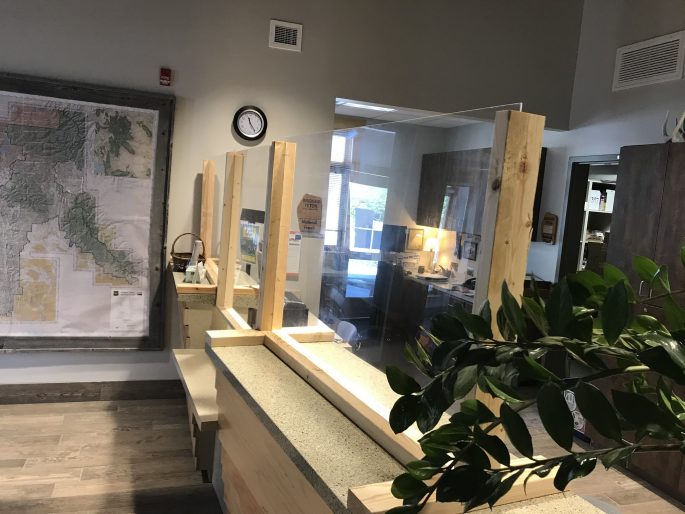Plexiglass barriers have been a staple of the last 16 months throughout the COVID-19 pandemic, from retail checkout counters to offices, restaurants to healthcare.
In fact, Bloomberg reports that U.S. sales of plexiglass tripled to roughly US$750 million after the pandemic hit.
But just how effective have they been against preventing the spread of the virus?
The report suggests, alarmingly, that there isn’t actually a single study that has demonstrably found that clear plastic barriers actually control the virus, according to Joseph Allen of the Harvard T.H. Chan School of Public Health. Key to that is that plastic shields may stop larger droplets, but they don’t have the same level of effectiveness in preventing the spread of the tiny floating droplets that tend to characterize the spread of COVID-19.
That meant plastic shielding has created “a false sense of security,” said building scientist Marwa Zaatari, a pandemic task force member of the American Society of Heating, Refrigerating, and Air-Conditioning Engineers. (ASHRAE). “Especially when we use it in offices or in schools specifically, plexiglass does not help. If you have plexiglass, you’re still breathing the same shared air of another person.”
Recent CDC research found that desk and table barriers in Georgia elementary schools didn’t correlate with lower infection rates, whereas mask mandates and ventilation improvements did.
In fact, installations like plexiglass side panels around desks actually threaten to increase the risk of transmission as they can block air flow, a key preventative measure.
Bloomberg does stress that plexiglass barriers are useful in the fight, citing several experts advocating for their use in setting such as in front of cashiers. Their high visibility also offers comfort and confidence for building occupants and visitors.
But the key is to not rely too heavily on them.
Indeed, as case numbers drop in the U.S. and restrictions continue to be lifted, some facilities are dropping the use of plexiglass. If current trends continue, building scientist Zaatari believes it will take only “a matter of weeks to remove all the plexiglass. The question is what they’re going to do with it.”
Thankfully, Craig Saunders, president of the International Association of Plastics Distribution, notes that plexiglass tends to be 100 per cent recyclable thermoplastic.








